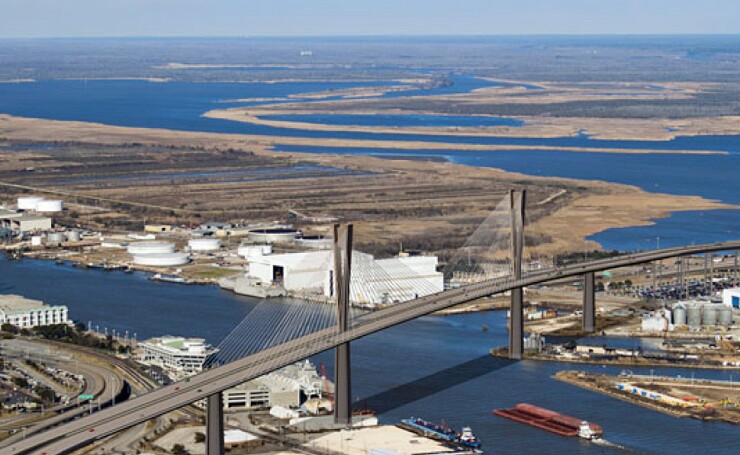A successful anti-toll road movement led Alabama Gov. Kay Ivey to kill a plan to build the $2.1 billion Interstate 10 Mobile River Bridge and Bayway project, which recently received federal environmental approval.
Ivey’s decision was announced after the Eastern Shore Metropolitan Planning Organization in Baldwin County voted to remove the I-10 project from its Transportation Improvement Plan, making the public-private partnership project ineligible to receive federal funds.

“With the action taken today, there is no pathway forward, and this project is dead,” Ivey said on Aug. 28.
The governor also canceled a public hearing by the Alabama Toll Road, Bridge and Tunnel Authority that was scheduled for Oct. 7, saying “without a project, there is no need for a meeting.” Ivey chairs the nine-member state authority.
A proposed $6 one-way toll to support the plan of finance, along with opposition to placing any toll on the interstate, has long dominated hearings and social media discussions about the 10-mile-long plan that included building a six-lane bridge over the Mobile River, even though a parallel, untolled route would be available for local motorists. The state was in the process of selecting a concessionaire for the P3. The bridge was to have replaced a four-lane I-10 tunnel under the river, and replaced the existing low-level four-lane I-10 bridges across Mobile Bay with eight-lane structures at an elevation above the 100-year storm surge level.
In July, the Alabama Department of Transportation was awarded a $125 million federal Infrastructure for Rebuilding America grant for the project, and had previously received a private activity bond allocation as well as loan approvals through the Transportation Infrastructure Finance and Innovation Act.
“At this point, we don’t foresee the $125 million INFRA grant being finalized, which means we would lose that funding,” said ALDOT spokesman Tony Harris. “We also will not receive $420 million in approved federal private activity bonds and an anticipated $800 million in federal TIFIA loans.”
Harris said the bonds and loans would have provided the “lowest interest [and] long-term financing possible for a project of this nature.” Those will not be available now that the Eastern Shore MPO removed the project from its Transportation Improvement Plan, he added.
The bridge and bayway plan was originally envisioned as a traditional federal-aid project where 80% of the cost would have been paid by the federal government, according to Mark Bartlett, division administrator with the Federal Highway Administration who signed documents approving the project Aug. 15.
In explaining why tolls had to be used, Bartlett said a nationwide funding shortfall due to decreased revenues from gas taxes and increased construction costs had prompted “a renewed interest in using toll financing to deliver major transportation infrastructure projects.”

Joseph Krist, a partner with Court Street Group, said the demise of Alabama’s project reflects the difficulty of financing infrastructure and the “incredible resistance to tolls,” both of which are among policies supported by the Trump administration.
“The fact that this happened in the reddest of states shows how hard user-fee financing will be to achieve,” Krist said. “If you can't convince a die-hard Trump state to go for this, how did they think that a P3 based, toll financed and funded nationwide infrastructure program will be received?”
The final environmental impact statement said hundreds of people commented about the project, most supporting the need to add roadway capacity across the Mobile River to relieve congestion.
Of 558 people who were asked if they favored the plan as proposed, 52% said there shouldn’t be a toll and 34% said the toll was too high.
Alabama has spent nearly $60 million developing the Mobile bridge plan since 1997, some of which came from the Federal Highway Administration.
ALDOT’s Harris said there has been speculation that the state might be required to reimburse the federal government.
“Our latest analysis indicates that we may be able to avoid reimbursing the Federal Highway Administration because a viable corridor has been developed and right of way acquired,” said Harris. “The final decision on this matter would rest with the Federal Highway Administration.”





